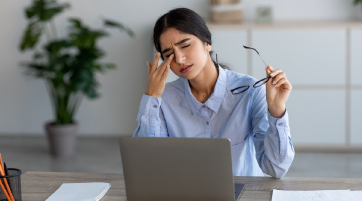

Butt rashes are uncomfortable as they can lead to swollen or irritated skin and become itchy and painful over time. However, to understand them better, and more specifically, to find the right treatment, you first need to know all about them.
And, to help your cause and get you out of these itchy buttocks, we have noted down all the essential information you need. So, read on.
What are Butt Rashes?
Butt rashes are simply skin irritations that can manifest as inflammation, itching, and redness. They appear reddish, grey, purple, or white and result in blisters, bumps, fluid leakages, and scaly, crusty skin.
Though butt rashes go on their own, some can last longer, and one has to get treatment. While in some cases, home remedies will work, some need medical attention. Having said that, skin rashes can also be signs of underlying conditions like fungal or viral infections, autoimmune diseases, or allergies.
Causes of Butt Rashes
Here are some of the major causes that result in butt rashes:
- Heat rash: As the name suggests, heat rashes appear due to high temperatures. These rashes are generally itchy and can appear as red bumps or blisters, and your skin can also feel prickly. This happens when sweat cannot escape the skin, clogging the pores and causing pimples to develop. This also appears when the skin rubs against each other.
- Prolonged moisture and friction: Those who have issues with bowel and bladder control have higher chances of developing butt rashes. They have to wear diapers for a long time, which traps excess moisture between the groyne area and buttocks, making the place ideal for fungal and bacterial growth. Pimply rash, irritation, etc., are symptoms of incontinence-associated dermatitis.
- Contact dermatitis: When your skin directly contacts the irritant, it leads to rashes. Contact dermatitis can be of two types: allergic contact dermatitis and irritant contact dermatitis. Symptoms of these include swelling, itching, bumps or blisters, etc.
- Psoriasis or eczema: Eczema or atopic dermatitis results in dry skin, making the skin itchier. Eczema can appear at any age, which makes the skin dry and crusty. In the case of psoriasis, the skin cells tend to build up and result in scales or dry patches.
- Genital herpes: This is a sexually transmitted virus that results in rashes around the anus and genitals. Any sort of sexual contact can transmit herpes. The symptoms of the rash can be seen in the place from where the virus has entered the body and spreads if one scratches it.
- Keratosis pilaris: It results from the gathering of keratin on the skin. For those who have keratosis, keratin blocks hair follicles’ opening by forming a plug, which leads to the formation of rough skin where tiny red bumps appear.
- Shingles: It is a viral infection caused by varicella-zoster virus (VZV). This is the same virus that causes chickenpox. After one has recovered from chickenpox, this virus remains in a dormant state and can be reactivated many years later. They appear as painful rashes on the body.
Signs and Symptoms of Butt Rashes
Butt rashes can have different signs and symptoms based on underlying conditions.
- Scaling and peeling of skin: Butt rashes can also be flaky and start peeling off. This can cause extreme discomfort.
- Wetness and discharge: In severe cases, you can experience discharge or excessive wetness in the affected areas.
- Redness and inflammation: The area where the rashes appear tends to have a flushed appearance or gets reddened.
- Bumps, sores, and blisters: You can also see the formation of blisters, small bumps, or open sores in the affected areas.
Preventing Butt Rashes
Prevention is the best way to avoid itching and rashes on the body. Here are some ways to do that:
- Preserve moisture in the skin: To prevent the affected area from becoming dry and flaky, try to preserve moisture in it. Furthermore, moisturizers support healing and function as a barrier of defense. It also lessens itchiness and discomfort.
- Dress in loose-fitting apparel: It is advisable to consistently wear garments that are breathable and moisture-wicking. It will prevent perspiration and, consequently, rashes. Cotton, for example, improves air circulation and lowers moisture accumulation.
- Refrain from scratching: Scratching exacerbates irritation and further deteriorates skin. Scratching exacerbates the afflicted area and raises the risk of infection. Treatment for Butt Rashes
Home Remedies for Butt Rashes
Opting for the below-mentioned home remedies can also help you reduce the symptoms of butt rashes:
- Aloe vera gel: Applying aloe vera gel to the place where the rash appeared will reduce the inflammation and soothe the skin.
- Coconut oil: You can apply coconut oil to the affected areas. You will get relief from itching. It works well on atopic skin swellings and helps reduce irritation and rashes.
- Tea tree oil: It has antimicrobial properties, proving effective in treating rashes caused by bacteria or fungus. Before applying, you must ensure that the oil is diluted with carrier oil.
- Oatmeal paste: Mix water with the oatmeal and apply it to the affected area to get rid of itching and inflammation. You can even take an oatmeal bath.
- Cold compress: You can also apply an ice pack or cold compress on the rash. It helps in alleviating inflammation and itching.
Conclusion
Rashes can appear all over the body, even on the butt. Additionally, butt rashes can be bothersome, but with proper treatment, you can get relief from them. Be it allergy skin rash, infections, or a rash due to moisture getting trapped, there are treatment options available for each case. From heat rashes to sexually transmitted infections to allergies, there can be many reasons why you can get butt rashes.




